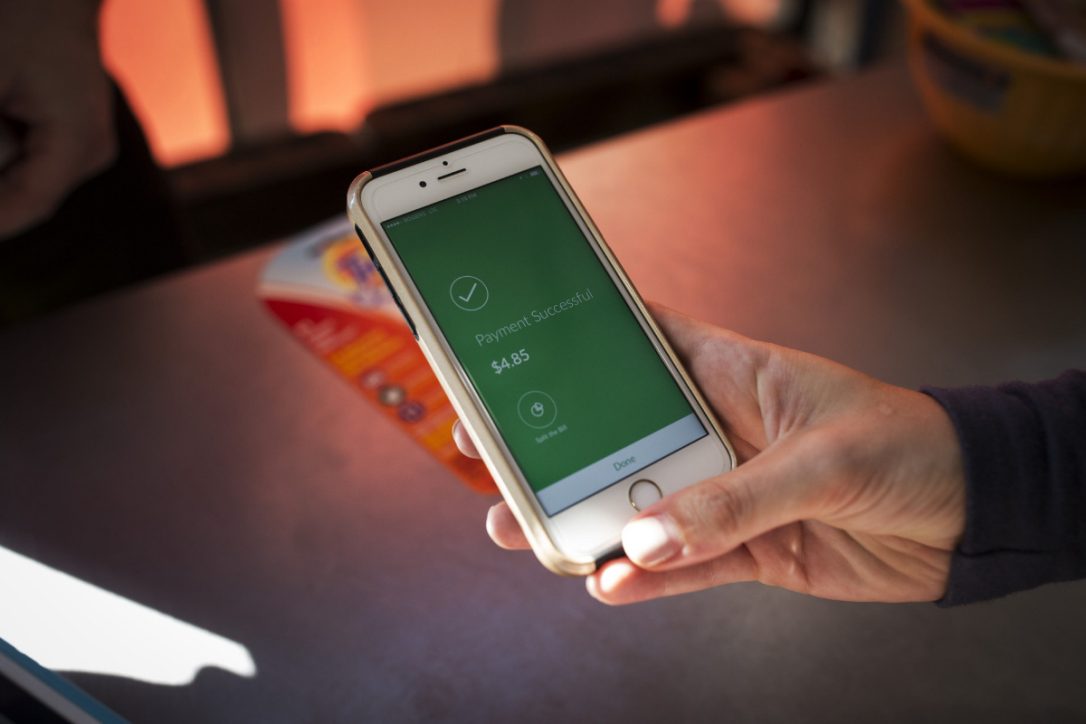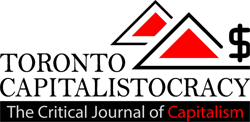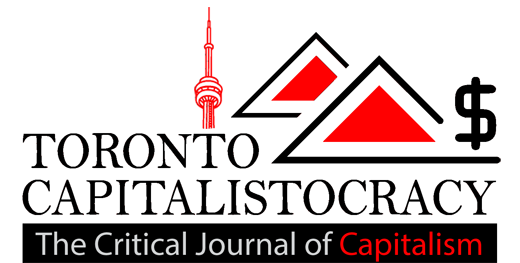Business
Toronto Startup Edges Closer to Cashless Future With its Mobile Wallet

Liberty Villagers have been leaving their wallets in their condos when they buy tools from the hardware store, stop in for sushi or purchase bouquets from the florist as part of a local currency experiment that could be a breeding ground for a cashless future.
The university campus-like Toronto enclave has been a “working lab” for MintChip, the digital currency developed by the Royal Canadian Mint and acquired by startup nanoPay.
Outside the startup’s office in a converted industrial building in the neighbourhood, a disproportionately large number of young professionals are crushed into a few blocks of condo towers and townhomes.
“It’s millennial heaven here,” said Simon Keogh, chief marketing officer of nanoPay. “It’s a perfect place to test things if you’re trying to understand how millennials are going to be using your products.”
The Toronto-based startup is one of hundreds of payments-focused financial technology players trying to compete with the likes of Apple Pay, a mobile wallet by the technology behemoth that launched in Canada this year. Technology-enabled players big and small are eyeing opportunities to disrupt traditional banking in a market expected to grow to a whopping $141 billion by 2019, up from less than $5 billion in 2014, according to some reports.

Although Apple has yet to release Canadian data on the uptake of its mobile wallet, there are signs it’s not being rapidly adopted in the U.S., where it’s been available since 2014. A March survey by Crone Consulting found that only six per cent of mobile users eligible for Apple Pay in the U.S. actually used the wallet. Tech research firm Timetric found Apple Pay accounts for just 0.2 per cent of total in-store transactions south of the border.
The major problem for the nascent industry? Convincing consumers a mobile wallet is better than a physical one.
“For me and you to use something in a big way, it needs to be ubiquitous,” said Rob Cameron, chief product and marketing officer at payment processor Moneris.
“There need to be enough businesses that you can use something in the market that you normally operate in such that it just becomes the daily way you do something.”
Apple Pay’s entry into the Canadian market has probably jump-started adoption rates and Cameron believes Samsung and Google will introduce their own wallets in Canada by the end of the year, which will further entrench the technology.
NanoPay faces greater challenges than its bigger rivals because it doesn’t have the brand recognition. And it also requires users to go an extra step and transfer Canadian dollars from their bank accounts into the MintChip currency at a par exchange rate.
Startups like MintChip are opting to provide an alternative to all three of the established payment types — cash, credit and debit — on the premise that consumers will be willing to take that extra step in exchange for a reward, said Bob Vokes, managing director of financial services for Canada at digital consultancy Accenture.
Tying in loyalty and incentive programs is key to persuading customers to go through the added step of converting their cash to cryptocurrency like MintChip, a “pay-before solution” (as opposed to “pay now” solutions like debit or “pay later” such as credit cards).

Starbucks’ payment app is a highly successful example of getting customers to load up a digital wallet in exchange for loyalty points — probably the major reason behind its success, Vokes said.
MintChip’s approach is particularly interesting, if not entirely new, he added, because it’s community-based.
“It’s a way to draw people in their communities tighter, using a payments mechanism,” he said. “But over time in order for these systems to truly work you do need some scale.”
Keogh believes the critical mass will follow because the technology offers benefits to both merchants — such as cheaper payment processing — and consumers, including rewards programs.
But before it can compete on a national scale, it has to perfect its product quickly to keep pace with the rapid industry change.
This is why it chose Liberty Village, a community that has become a microcosm of Canadian commerce, with multiple restaurants and nearly every type of shop — and scale up from there.
That has also made it an ideal hub for other local tech startups looking to test out their products. Uber chose the high-density community as one of the test routes for its now-defunct UberHop fixed-route carpool experiment.
NanoPay selected a cross-section of 13 local retailers to test and improve the platform — including a pub, a florist and a cake shop. The “working lab” allows it to iron out kinks before a national launch some time next year.
For example, after receiving feedback at the MintChip-enabled Brazenhead pub, the company added the ability to add a tip or split a bill to a recent update of its app.
Launching a new currency is particularly challenging, Keogh said, because the company must focus on appealing to two sets of user bases.

“When it comes to adopting different forms of payment, there is in many cases a sort of chicken and the egg. You need consumers to adopt it and you need merchants to be able to accept it.”
The platform requires customers and merchants to download apps that speak to one another when a customer scans a QR code on a device with the app downloaded.
This year, they will also be able to use in-store terminals after the company signed a deal with Canada’s largest payments processor.
Consumers can also make free peer-to-peer transfers, such as for rent or allowance. Peer-to-peer transfers currently outpace merchant use 10-to-one, after “hundreds of thousands” of users across the country downloaded the app, Keogh said.
During the trial phase, the company is coaxing customers to download the app by offering 20 per cent cash back in MintChips.
Smaller merchants will be able to offer similar rewards programs through MintChip’s platform that they wouldn’t otherwise have the scale or money to roll out. Merchants also avoid fees paid to banks, payment processors or credit card companies because transfers go from one user’s cloud-based storage vault to the other.
NanoPay is still figuring out the exact revenue model, but Keogh said it will involve a monthly rate as well as a per-transaction fee that is “a fraction of what they are paying today” for credit and debit transactions.
Since its June 21 launch, MintChip users have added nearly $200,000 to their accounts and the company has processed nearly 10,000 transactions, Keogh said, though he declined to say how many regularly use it.
Still, Liberty Village merchants say payment with MintChip is relatively rare. At Home Hardware, about five customers paid with MintChip in the past week, while about five per cent of purchases at the local Freshii quick service restaurant are made with the digital currency.
But the possibility of a cashless future is gaining traction.
Cash purchases will make up just 10 per cent of money spent in Canada by 2030 compared with 35 per cent of transactions in 2014, payment processor Moneris Solutions Corp projects.
For mobile payments to take off, providers will have to make the case that using a phone to pay is that much more rewarding and convenient than tapping a card, he said.
“Any of these innovative solutions like MintChip are testing if there are other approaches to accelerate moving to cashless,” Moneris’s Cameron said.
“It really comes down to have you made the consumer’s life better in some way?”
Business
Beauty Week is back at Hudson’s Bay in Toronto and it’s time to get glam

Beauty enthusiasts rejoice! Beauty Week at Hudson’s Bay is back in Toronto for another year. It’s time to stock up on all of your fall essentials and, maybe discover some new ones.
From Friday, August 18 to Sunday, August 27, you can expect a truly elevated beauty experience in-store with incredible special offers, limited-time gifts, and exciting activations.
If you’re a diehard beauty lover, you’ll already know that Hudson’s Bay is the place to shop thanks to its extensive range of over 195 skin and makeup brands from both luxury labels and masstige brands — including Tata Harper, Estée Lauder, YSL, Nars Cosmetics, Bobbi Brown, and so much more.
Throughout The Bay’s Beauty Week, visitors can take in some at-counter activations and interactive expert-led tutorials, where there will be chances to get makeup touch-ups from top-tier brands, try a spritz of the most alluring fragrances, and sample tons of new products.
This year’s Beauty Week highlight is the ‘Best in Beauty’ tote, a meticulously-curated selection of 30 deluxe samples from an array of top-tier brands like Dr. Barbara Sturm and Shiseido spanning skincare, fragrance, and makeup — all in a super sleek bag.
The tote, which is valued at over $300, is retailing for just $39 and is a fantastic way to explore new products (without breaking the bank). However, there is a limited quantity, so if you want to get your hands on one, you’ll need to be fast.
Wondering exactly what Beauty Week’s free gifts with purchases entail? If you spend over $95 at Lancôme, you will receive a six-piece set valued at $130. Or, you can get an Estée Lauder gift valued at $170 with purchases over $80. (And that’s just to name a few.)
If you’re a Hudson’s Bay Rewards member, you’ll also get $20 in Hudson’s Bay rewards when you spend over $100 on beauty.

Business
The Canadian Armed Forces are hiring for several non-combat military jobs

The Canadian Armed Forces (CAF) have several non-combat jobs, some of which do not require a college degree or past work experience.
Life in the forces has several benefits, such as paid education plans (college, university and graduate-level programs), 20 paid vacation days, health and dental coverage for you and your family, maternity and paternal leave, and pension plans. You can learn more about the benefits in detail here.
And to make it easier to gauge if you qualify, the listings also include related civilian jobs to see if it’s your ideal role.
Financial services administrator
Related civilian jobs: Financial records entry clerk, financial manager, accounting technician, bookkeeper, budget officer, cashier clerk, business planner technician, and verification manager.
Description: You’ll help budget resources for all military activities besides providing financial assistance.
Education: You need to have completed Grade 10.
Duties: As a financial services administrator, you’ll be responsible for bookkeeping and managing budgets. You’ll also provide support in accounts payable and accounts receivable.
Work environment: Those in this role work at CAF bases, on ships or overseas. You might also be expected to help special operation units, recruiting offices, schools, and medical organizations.
Postal clerk
Related civilian jobs: Mail clerk, mail sorter.
Description: You’ll provide postal services to members and their families at bases and establishments.
Education: Grade 10. No previous work experience or related career skills are required.
Duties: As the postal clerk, you’ll handle mail duties.
Work environment: Besides a postal office, you may work on a ship or a mobile postal van. You might be expected to serve with Royal Canadian Navy, the Army, and the Royal Canadian Air Force in Canada and abroad.
Dental technician
Related civilian jobs: Dental assistant, dental hygienist.
Description: You’ll be helping dental officers provide dental services to CAF members, their families, and dependents.
Education: Level II dental assisting diploma from an accredited college or a National Dental Assisting Examining Board (NDAEB) certificate.
Duties: Those in this role will be responsible for various responsibilities, including disinfection and sterilization of dental equipment, applying rubber dams, placing cavity liners, and controlling bleeding. In addition, you’ll assist in laboratory procedures like creating casts, custom trays, and mouthguards.
Work environment: This role will require you to work in a military dental clinic, a Mobile Dental Clinic, an Air Transportable Dental System, or onboard a ship. You might be expected to work on a base in Canada or other operations in other parts of the world.
Human resources administrator
Related civilian jobs: Records administrator, data entry supervisor, receptionist, office manager, executive assistant, payroll clerk, and information management technician.
Description: Provide administrative and general human resources support.
Education: Grade 10. No previous work experience or related career skills are required.
Duties: In addition to human resources administration and services, you’ll be handling pay and allowances, managing automated pay systems, and maintaining personnel records.
Work environment: HR administrators work at all CAF bases in Canada. They also work on ships and overseas to support the Canadian Army, Royal Canadian Navy, or Royal Canadian Air Force operations.
Medical assistant
Related civilian jobs: Emergency medical responder, ambulance and first aid attendant, registered nursing assistant, licensed practical nurse, and hospital orderly.
Description: Successful candidates will help treat the sick and injured in CAF units. You’ll be assisting and supporting nursing and medical officers.
Education: Minimum of Grade 11 biology, Grade 10 physics or chemistry, and Grade 10 math.
Duties: You’ll provide initial care and essential life support treatments in trauma cases. You’ll help with health assessments (hearing and vision tests, perform basic lab procedures, etc.) and initiate and manage medical records and reports. You’ll also be expected to provide support and first aid during training exercises.
Work environment: Medical assistants may serve with the Royal Canadian Navy, the Royal Canadian Air Force or the Canadian Army as part of the Canadian Forces Health Services Group. Those in this role are exposed to the same risks as the forces they support.

Business
Porter’s new loyalty program promises to match Air Canada’s Aeroplan status

Porter Airlines is once again stirring the pot among Canadian airline rivals, now going after Air Canada’s Aeroplan members by offering to match their loyalty status to an equivalent of their own.
The beloved airline, which recently ranked as having the best cabin service in North America, challenged the competition for the second time this year, after previously deploying a similar tactic against WestJet in the spring.
Earlier in April, Porter presented customers with a limited-time offer to match the loyalty status of WestJet’s patrons with VIPorter levels.
Now, they’re offering Aeroplan members to seamlessly transition to an equivalent VIPorter Avid Traveller status based on their existing membership tier.
Members can then take advantage of an array of travel perks that come with flying Porter, including seat selection, baggage, and flight changes.
For those currently holding an Aeroplan membership, there are two ways to acquire the Avid Traveller status for the rest of 2023:
Status-Based Match:
- Aeroplan 25K members = VIPorter Venture
- Aeroplan 35K members = VIPorter Ascent
- Aeroplan 50K, 75K, and Super Elite = VIPorter First
Flight Segments-Based Match:
- 5 flight segments = VIPorter Passport
- 8 segments = VIPorter Venture
- 17 segments = VIPorter Ascent
- 28 or more segments = VIPorter First
Members will have to first submit their applications on Porter’s website. Registration will remain open until September 6, 2023.
In order to maintain their membership level through 2024, customers will have until the end of 2023 to reach the following reduced qualifying spend (QS) targets:
- Passport = $500 in QS
- Venture = $750 in QS
- Ascent = $1500 in QS
- First = $2500 in QS
Over the past year, Porter has launched an aggressive expansion strategy, including everything from introducing longer flights on newly-purchased jet planes flying out of Toronto Pearson, free WiFi, and a new all-inclusive economy experience.
With Canadians losing both Swoop and Sunwing as WestJet incorporates both into their mainline business, Porter’s direct competition is welcome to keep prices competitive.




